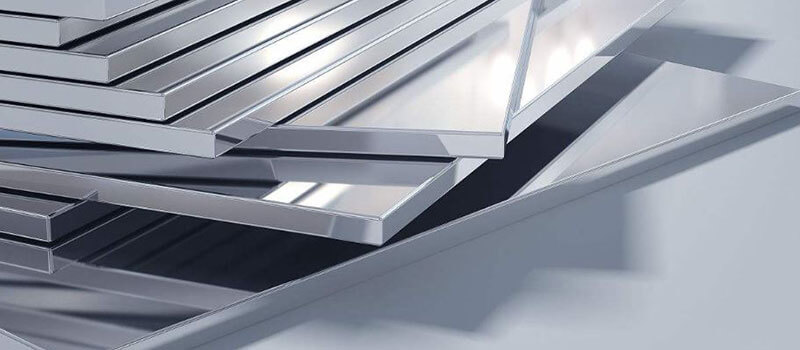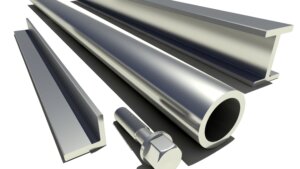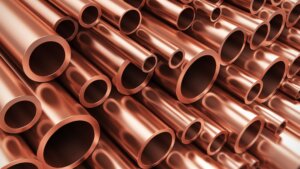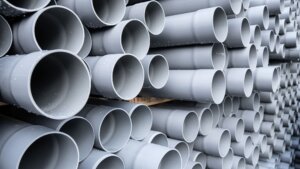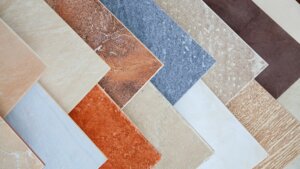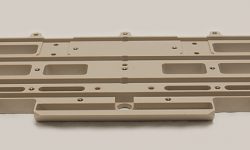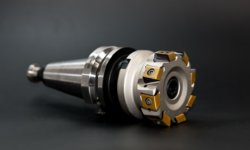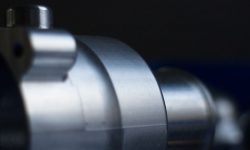The CNC machining process is a great way to turn innovative designs into precise working models. However, users can only enjoy the full advantages of the process if they use the right CNC machining materials. Using the most suitable material can produce products that exceed your expectations. In contrast, not choosing the best CNC machining material for a particular project can end in utter disappointment when you see or use the finished part.
CNC machining and CNC milling offer superb versatility. You are not limited in choices; there is a wide range of materials suitable for CNC machining. The best CNC material for a project will depend on many factors.
This article will guide you in choosing between different CNC machining materials, allowing you to create the best CNC machining project and get the best results!
Factors That Affect The Choice of CNC Machining Materials
Many factors affect which CNC materials are best for a specific project. For example, the technical requirements to manufacture space shuttle engine components are far more demanding than those for constructing high-performance recreational equipment.
Consider the factors below and how they might affect your scenario before choosing the best material for your project.
Purpose
Use the purpose of the component to shortlist possible materials you can use for it. For example, to make toys, you should avoid using metal materials. Manufacturing insulation-related components r needs a material with low conductivity.
Indoors vs. Outdoors
A component for outdoor use must be resistant to UV rays, rain, and other weather elements. Such parts require durable material properties and a robust design. In contrast, an indoor component has no exposure to extreme environmental conditions, so a more extensive range of suitable materials is available.
Stress Load
Many manufacturers forget to account for the load-bearing stress on the part, leading to complete part failure. A component or part that must handle high-stress loading requires strong materials with good mechanical properties and superior dimensional stability, such as metals, alloys, or high-strength plastic materials.
Dimensional Tolerance
Every material has a dimensional tolerance that affects the overall accuracy of the manufactured part. In many cases, dimensional tolerance might not be a critical factor, but applications such as medical equipment require precision parts. Tolerance comes at a price, so if a project requires extremely low tolerances, you will need specialized cutting tools on the CNC machine.
Using a material with suitable dimensional tolerance initially is cheaper than having to pay to resize the part later.
Machinability
Materials with high strength and hardness might seem ideal but often take longer to machine and cause more wear and tear on cutting tools. The benefits of choosing materials with good machinability results are faster production and minimum maintenance.
Fastening
CNC machining often creates parts that form more complex components in a later assembly incorporating fasteners. The fastening measures are in the initial CNC design. But not every CNC material supports fastening, and specific properties such as galvanic corrosion resistance can be important for some fastening cases. So, choose a material that supports the specific fastening requirements.
Temperature Range
Consider the operating temperature range for the final product and its environmental conditions. The material must handle the required operating temperature and any expected thermal changes. Many materials expand due to temperature variations. For example, some plastic materials can handle typical operating temperatures but break down or warp when temperatures change too frequently.
CNC machining processes like CNC milling use cutting tools that generate heat. This heat transfers to the component material. Ensure the material you choose can handle the increased temperatures during the CNC machining process without distortion.
Chemical Resistance
Chemical resistance is just as important as resistance to high temperatures. For example, a CNC machined component destined for use in a chemically reactive environment such as a lab or research facility needs to be chemically resistant. Using metal materials in an acidic environment is never a good idea.
Corrosion Resistance
For high-humidity environmental conditions, focus on the corrosion resistance characteristics of the material. Materials with poor corrosion resistance can rust and degrade quickly. Does the project require high-strength metals for a high-humidity working environment? Try corrosion-resistant alloys.
Weight Capacity
The weight of the material and its weight-bearing capacity are critical factors for most projects. In cases where the part will support heavy weight, you must choose a sufficiently strong material. These materials are typically heavier in weight themselves. Is the part’s weight a critical concern? Then a high strength-to-weight ratio material is the best option.
Durability and Strength
A robust manufacturing process is vital so that the part will last for its intended lifespan. So, evaluate the strength and durability requirements of the application and choose a material that meets those characteristics. Consider the factors below:
- Tensile Strength: The tension a material can handle before breaking down.
- Wear Resistance: The degree of resistance against abrasion or natural wear and tear during its lifespan.
- Endurance Strength: How much stress an object can absorb. An impact-resistant material has high endurance strength.
Surface Finishing
When aesthetics are a concern, choose a material that provides a high-quality surface finish. For example, a metal surface can be treated for a smooth glossy, or matte surface finish. The same is not the case for many plastic-based materials.
Raw Material Cost
Lastly, the cost is a deciding factor in choosing the best material for CNC machining. Do you have a limited project budget? Go for plastics or ceramics. Metals and their alloys have exceptional physical properties but are expensive CNC materials.
What are the Different Material Options for a CNC Machining Project?
CNC materials fall into basic classes: metals, plastics, woods, foams, ceramics, and composites. Below is a list of the different classes with examples of CNC materials in each.
Metals
Metal parts provide the best precision and ruggedness of all CNC machining materials. However, they come at a high cost and with vulnerabilities such as corrosion in humidity. Metal alloys eliminate most of these vulnerabilities quite well. Common metals and their alloys used in CNC machining include:
Aluminum
Aluminum and aluminum alloys are the most common materials used in CNC machining projects. Aluminum is known for its superb strength-to-weight ratio. Aluminum parts are lightweight but can handle high stress. It has excellent machinability and low raw material costs, so aluminum is more popular for cheap mass-production projects than other metals. Different types of aluminum alloys used in CNC milling include:
- Aluminum 6061
- Aluminum 7075
- Aluminum 6082
- Aluminum 5083
Applications of CNC machined aluminium:
- Consumer electronics
- Medical devices
- Aerospace frames
- Automotive components
Steel
Steel is an alloy made of iron and carbon, with improved strength and corrosion resistance characteristics of iron. Steel has extensive use in CNC machining in different forms like sheets, bars, cylinders, and blocks. Many types of steels with varying amounts of carbons exist.
Some common types include:
- Stainless steel
- Steel 1018
- Steel 12L14
- Carbon steel
- Carbon steel 1045
Carbon steel contains a higher amount of carbon than other steel. So, carbon steel has high strength and hardness characteristics but is more brittle.
Characteristics of steel include very high strength, high ductility (ability to draw into wires), excellent machinability, high corrosion and wear resistance, and good surface finishing. However, producing steel parts in high volume can be costly.
Applications of CNC machined steel:
- Automotive components
- Car Accessories
- Aircraft components
- Tools
Stainless Steel
Stainless steel is one of the most widely used types of steel in CNC machining. It has a comparable volume to many other materials like wood. But it requires a cursory understanding of its own.
It comes in many different grades:
- Stainless Steel 303
- Stainless Steel 304
- Stainless Steel 316
- Stainless Steel 416
- Marine-grade stainless steel
- And more
The most sought-after quality of stainless steel is its ability to resist wear and abrasion. It is ideal for manufacturing precision parts but is costly for large-volume production.
Applications of stainless steel in the machining industry:
- Medical industry
- Tooling
- Aircraft construction
- Tankers and vessels
- Food and catering utensils and equipment
Brass
Brass is one of the most expensive materials for CNC machining. Some common types of brass used in machining include C3604 and C3602. It is often the preferred choice for one-off artwork and aesthetic-based projects that do not have a limited project budget.
Brass has a smooth surface finish that is easy to polish. Brass is easy to machine, reducing the operational costs of CNC machining. Other appealing qualities of brass are its electrical conductivity, high corrosion resistance, and low friction. The qualities of brass make it ideal for:
- Sanitaryware
- Locks
- Hinges
- Zippers
- Valves
- Locks
- Art installations
Titanium
The toughness and hardness of titanium make it ideal for applications that require high strength and durability. Titanium is also highly corrosion-resistant, and various surface finishes are available.
Applications of CNC machined titanium:
- Aerospace industry
- Sporting equipment like golf clubs
- Knives
- Wristwatches
- Glasses
- Jewelry
- Sculptures
Copper
Copper has superb electrical and thermal conductivity. It is often used in CNC machining because it has high ductility, malleability, and corrosion resistance. However, the cost of copper can be high compared to other materials, including metals, making it quite expensive for mass-producing metal parts.
Applications of CNC machining copper are:
- Valves
- Electrical connectors
- Radiators
- Insulation components
- Heat exchangers
Other Metals and Alloys
Besides these common materials for CNC machining, some other metals and alloys can find fewer applications. These include:
- Bronze
- Zinc
- Magnesium
- Molybdenum
- Tungsten
- Kovar
- Invar
- Nickel
- Hastelloy
Plastics
Although metals have good physical properties, they can be expensive to mass-produce parts. For large-volume production, plastics tend to be cheaper. Many plastic resin compounds offer sufficient strength and other physical properties to make them ideal replacements for metals.
Common plastics used in CNC machining:
Acrylonitrile Butadiene Styrene (ABS)
ABS is one of the most common forms of plastic used in CNC machining. It is a thermoplastic with good physical properties. It is also very easy to machine. ABS performs well across a wide temperature range compared to many other plastics. The cost of ABS raw materials is low, making it cheap for large-scale production.
Common applications of ABS:
- Pipes
- Fittings
- Vacuum components
- Keyboard keys
- Electronics housing
- Prototypes
- 3D building
Thermoplastic Polyvinyl Chloride (PVC)
PVC is another plastic extensively used in CNC machining. Its standout qualities include its sturdiness and chemical, corrosion, and fire resistance. It is cheap to use, making it a suitable material for limited-budget projects.
Applications of PVC:
- Pipes
- Medical device manufacturing
- Electronics housing
- Insulation
- Automotive industry interiors
- Footwear
- Seat coverings
Acetal- Delrin (POM)
Polyoxymethylene is commonly known as acetal, polyacetal, Delrin, or POM. It is a thermoplastic material that provides high dimensional stability and low friction. It is an excellent choice for mass-produced precision parts using CNC machining and injection molding.
Some common applications of CNC machining for Delrin:
- Toys
- Sports gear
- Mechanical parts like screws, chains, gears, etc.
- Small scale models
- Medical equipment
- Zippers
Acrylic (PMMA)
Polymethyl Methacrylate, known as PMMA or Acrylic PMMA, is a common thermoplastic material. It is visually transparent, giving it the name Acrylic Glass. Several trademarked brands like Plexiglass, Lucite, and Perspex use this material. It has high flexural and tensile strength, UV tolerance, and abrasion resistance.
Applications of acrylic for CNC machining:
- LED lights
- Architecture
- Electronics
- Industrial applications
- Automotive lighting parts
Polycarbonate (PC)
Polycarbonates (PCs) are somewhat similar to PMMA acrylics, as some grades of polycarbonate materials can be visually transparent. They have very high machinability, making them easy to mold into different parts.
Applications of polycarbonate:
- Dome lights
- Insulation components
- Dielectrics
- Sound walls
- 3D printing
- DVDs
- Eyeglasses and sunglasses
Noryl (PPO)
Noryl is a blend of a plastic resin, such as PPO or PPE, and polystyrene. The resulting material has good dimensional stability, machinability, and low density. Noryl can also be resistant to high temperatures and incorporate electrical insulation properties.
Applications of Noryl:
- Electrodes
- Electrical equipment
- Water pumps
Polypropylene (PP)
Polypropylene (PP) is the most widely produced plastic after polyethylene. It is a rugged material and has excellent chemical and heat resistance. Propylene’s high strength and rigidity make it ideal for pure water distribution systems. It is also resistant to chemical leaching and corrosion.
Applications of propylene:
- Potable plumbing
- Hydronic heating
- Lab equipment
- Bottle caps
- Bottles
- Drums
- Loudspeaker drive units
Teflon (PTFE)
Polytetrafluoroethylene, commonly known as Teflon, is a popular polymer. It is a hydrophobic material unaffected by water or water-based liquids. It has an extremely low coefficient of friction, lower than most other solids.
Applications of Teflon for machining projects:
- Wire insulation
- Bearings seals
- Musical instruments
- Kitchen accessories
High-Density Polyethylene (HDPE)
HDPE, also known as PEHD, is a common thermoplastic polymer. It has high corrosion resistance and a high strength-to-density ratio. It is commonly recycled and consumed in large amounts globally.
Applications:
- Pipes
- Bottles
- Jerrycans
- Milk jugs
Ultra High Molecular Weight Polyethylene (UHMWPE)
UHMWPE, also called High Modulus Polyethylene, is a type of thermoplastic polyethylene. Its toughness makes it the most impact resistant of all thermoplastic materials. It is also chemically resistant to most acids and alkalis.
Common applications:
- Fibers for parachuting and fishing lines
- Medical implant biomaterial
- Marine infrastructure
Nylon
Nylon is a thermoplastic with a silk-like texture. The physical properties of nylon vary significantly with the addition of different materials. Some common types are nylon 6, 66, 510, and 1.6.
Applications:
- Machine screws, gears, and gaskets
- Car composite parts
- Firearms
- Toothbrushes
- String trimmers
Other Plastics
Polyether ether ketone (PEEK) has a high level of resistance to corrosive substances and a high melting point, making it a popular material for machining parts and various other projects.
Other plastics that can be CNC machined are:
- Polyvinylidene fluoride (PVDF)
- Polyetherimide – Ultem (PEI)
- Phenolics (Bakelite)
Woods
Woods such as plywood and solid wood used to be popular in CNC machining. However, environmental, availability and cost factors have shifted the focus to metals and plastics. Despite this change, wood is still a popular CNC machining material in some industries.
Applications:
- Furniture frames
- Carvings
- Legs for tables, chairs, and beds
- Decoration pieces
Foams
CNC machining material selection is not limited to hard materials. Even softer substances like rigid and carving foams are excellent materials for CNC machining in industrial applications.
Applications of CNC foam machining:
- Packaging elements
- Insulations
- Decor items
- Props
Ceramics
Ceramics are aesthetically beautiful, and their physical properties make them ideal for various applications. They are good insulators against heat and electricity and have high compressive endurance.
Applications for ceramic CNC machining:
- Decor pieces
- Insulator elements
- Jewelry pieces
- Electrical component housing
Composites
Composites, such as FRP, have become common nowadays for their exceptional mechanical properties, ability to withstand pinpoint surface loads, tensile strength, and many other factors. They are the best materials if the job requires a robust, durable, low-cost solution.
Applications:
- Decor pieces like fountains
- Glass replacement
- Aerospace applications like radar and antenna
- Aircraft industry parts
- Sports
- Wind turbine blades
Tips for Optimizing Material Selection for CNC Machining
So, how can you improve the material selection process and add more value to your project?
Go Beyond Metals
Many manufacturers immediately look at metals when thinking of a CNC machining project. In recent years, non-metallic materials have provided better value for money by offering similar physical properties to metals at a lower cost. They are also easier to machine.
Choosing the Right Material Grades
Many materials come in different grades. When you decide on a material for your project, say steel or foam, choose the most suitable grade of that material, as they can vary considerably in their properties. For example, rigid and carving foam have different purposes as finished parts because of their distinct properties.
Dust Filtering
Many materials, such as composites, wood, and even metals, generate excessive dust during CNC machining. Excessive dust can harm the workforce and even the finished parts, In many cases, especially aerospace and aircraft components and R&D applications, cleanliness is critical. When choosing dust-generating materials, follow proper dust removal protocols to ensure a safe workplace and preserve the integrity of finished parts.
Which is the Best Material For a CNC Machining Project?
No single material can be deemed best for all CNC machining projects. Different materials have distinct properties and purposes, although aluminum is the most widely used since its properties are flexible and suitable for most requirements.

Conclusion
Choosing the right material for CNC machining can be daunting due to the many options available. Aluminum is an excellent choice for its light weight, strength, and machinability, while stainless steel is ideal for parts that need to be durable and resistant to corrosion. Other materials, such as titanium, brass, and bronze, are also viable options for specific applications. The best material for CNC machining will depend on the requirements of a given project. When selecting a material for CNC machining, consider the properties and performance of the material, as well as its cost.
Choosing the right material is the first step. But using the right CNC machining services is also a critical decision. 3ERP is the best available solution in this regard. As a leading CNC machining service provider, 3ERP can handle any project requirements and offers every possible material you might need.
Frequently Asked Questions (FAQs)
Here are the answers to some commonly asked questions regarding choosing the best material for a CNC manufacturing process:
What is the most common material used for CNC machining?
Common materials used for CNC manufacturing are steel, aluminum, and plastics.
What are the hardest materials to machine?
Heat-treated alloy variants such as alloy steel and cobalt-based alloy are generally the hardest materials to machine.
Which material has the highest machinability?
Free-machining steel is a material that has the highest machinability. Materials like plastics and composites are easier to cut but can react badly to high temperatures generated during the cutting process.
Which is the most durable material that can be CNC machined?
Maraging steel is the most durable material for CNC machining.
Which CNC machining material has the best heat and temperature resistance?
Ceramics offer the highest resistance to heat and temperature changes.
